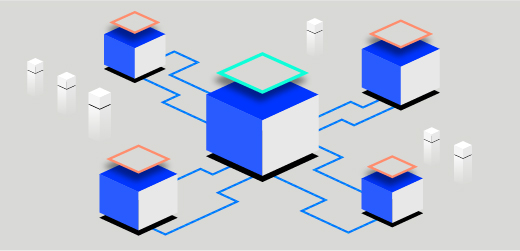How to Train Your Big Data Dragon
- Reading Time: 5 minutes
Some couple thousand years ago, leaders of society had to risk life and limb to slay dragons. Now, it’s the data dragons they’re busy trying to tame! The prevalence of high-powered hardware and software options and an increasingly digitalized lifestyle means that all kinds of data is available for anyone to find and use. On top of that, it’s easier than ever before for companies to acquire massive amounts of proprietary data.
But at the same time, the sheer amount of data can be daunting. What data should be collected, how to collect it, and how exactly can it help? Many companies in the modern world opt to stick with tried and true strategies that are more traditional rather than step into the confusing world of analytics and data.
As you might guess, this kind of attitude leaves these companies woefully unprepared for the future of their own industries. Essentially, any business that relies on quick and real time agile decision-making will gain an advantage from big data analytics. For instance, traditional advertising involves pitching ideas amongst various departments. Now, advertises who work with marketing platforms can create original campaigns faster than ever. Oreo produced a great example of this. When the power went out during the 2013 Super Bowl in America, they quickly posted across social media accounts, “Power out? No problem. You can still dunk in the dark!” Their social media following skyrocketed.
Here we’ll outline a number of ways that you can use data to your company’s advantage using platforms like Dataroid using a number of case studies on how other companies have been able to train that data dragon.

Big Data helps you launch targeted campaigns you know will be effective to your audience
Clearly this is one of the more standard advantages of big data analytics. It’s now easier than ever to define specifically who your audience is to a previously impossible degree of accuracy, including demographics, geographic location, and how they interact with your company in real-time. After analysing the data, you can develop detailed profiles of your customers and their interests, specifying patterns and trends. This means that you can not only profile your current customers, but also predict their behaviour patterns into the future using tools, which utilize website analytics and mobile apps, among other things, to produce further data that lends to accurately identify your target audience.
The Weather Channel is a good example of how big data completely transformed their business. Aside from the data required to amass climate predictions from all over the world, the weather channel app began to collect data on its customers from all over the world. This in turn allowed them to do everything from help customers who were flying learn how turbulent they might expect their flight to be, to shampoo recommendations in social media ads for customers whose weather forecast was particularly humid. The app was a huge success and immediately became an industry leader in delivering both profits and customer satisfaction.
Sign up to drive your business with the power of data
Big data helps you retain and grow your customer base
Similarly, big data helps you grow your customer base beyond just the original target audience. Customers are obviously the most important part of any business, and data allows you to see what they want and where they’re trending. The more data collected, the more trends and patterns that can be identified. Companies today need to connect with their customers – over the web, mobile apps, social media, email, phone or any other method – and listen to their needs and interests. That data can then be used to identify different sets of data for different audiences, and then to align content to each set.
The classic example here, of course, are e-commerce websites, which recommend products and services to users based on their past behaviour. The second a user goes to a product search page, they are shown an array of products which represent the website’s “collaborative filtering” based on the customer’s behaviour. This behaviour can be anything from previously purchased items or items the customer has interacted with in the past, to incredibly elaborate data-driven measures that determine what customers might buy at certain stages of their lives or careers. Famously, the shopping market Target even determined when women might be pregnant before anyone else in their family knew based on their shopping behaviour. The algorithms used in e-commerce can be very complex, using data related to time, location, demographic distribution, and a whole lot of other metrics including open rate, click rate, and opt-out rates.
Key Takeaways
Big data analytics is an important investment for a growing business. Through implementing big data analytics, businesses gain a competitive advantage over their rivals, reduce the cost of operations, and drive customer retention. There are various sources of customer data that businesses can leverage. And as technological advancements continue, there will be no shortage of new data and new ways to use it.
Of course, there is already more than enough data at your disposal to begin using it effectively. But it’s necessary to implement appropriate data analysis systems that can handle the volume of data, and know how to interpret it correctly. Dataroid has been busy taming the data dragon almost since the time when King Arthur was pulling his sword out of stone, and its roundtable of experts is in place to help you maximize your potential and analyse the data to move your business forward.

YOU MAY ALSO LIKE
Improving Data Security Management: Best Practices for Businesses
Understanding Behavioral Analytics: A Step-by-Step Guide
Customer Churn Analysis: A Comprehensive Guide
Optimizing Your Marketing Funnel: The Ultimate Guide
How to Use Personalization to Drive In-app Engagement
Drive your digital growth
Schedule a demo today to learn more on how we can help you unleash the potential of digital using Dataroid.





